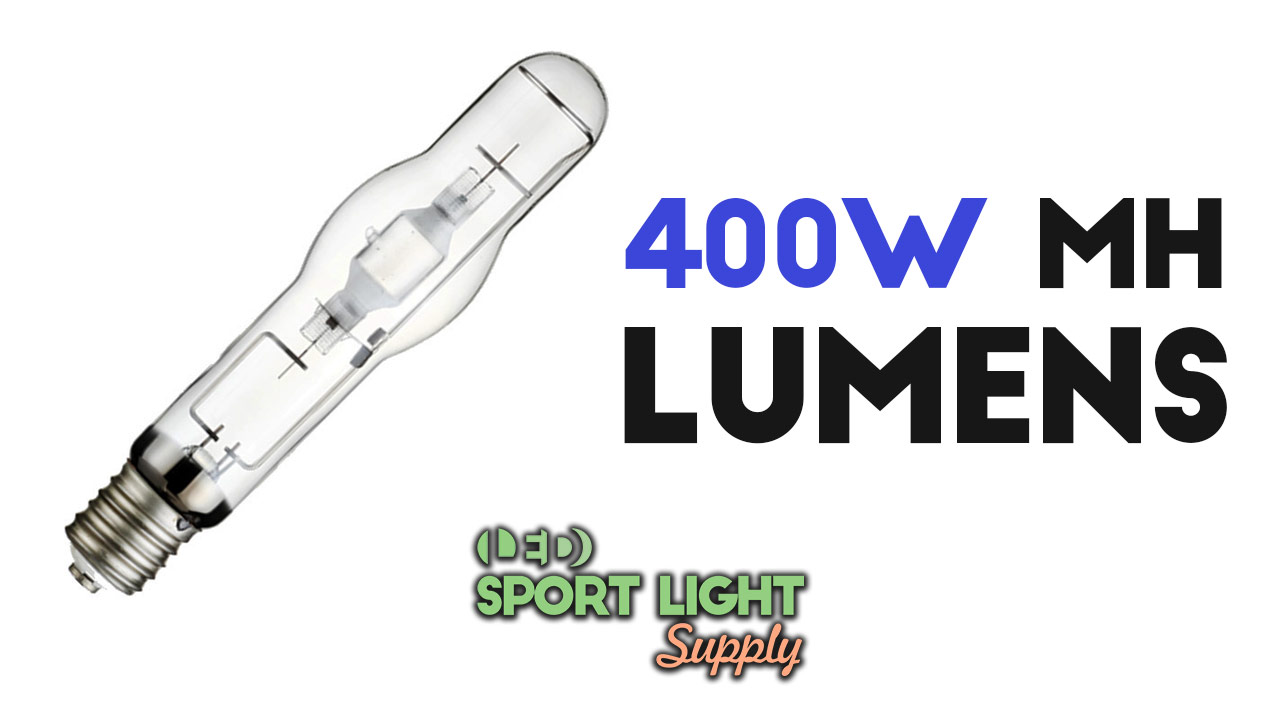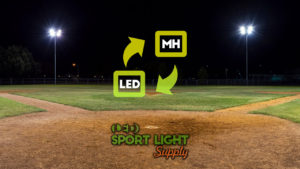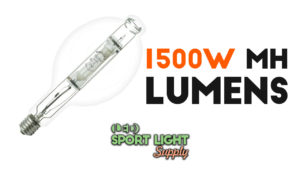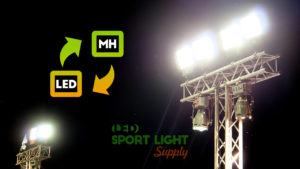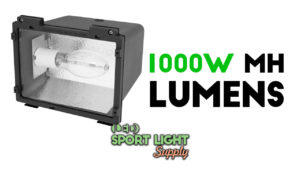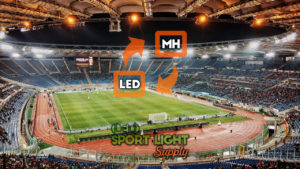What is the lumen?
The lumen is a necessary unit of measure to calculate the luminous efficacy of a light source. When you shop for new lamps, you mainly see two values. One refers to the lamp’s lumen output (lm), and the other to its wattage (Watts or W).
In photometry, lumens represent the amount of light emitted by a light source. Technically, experts call it “luminous flux.” They study how the luminous flux propagates in the space around it and create photometric curves. Thus, lumens are useful to set the right light intensity for the experiments.
Each lamp generates a precise amount of lumens. But not every bulb with equivalent wattage emits the same amounts of lumens. This means that a 400W LED light does not produce the same lumen output as a 400 watt MH light. Of course, the metal halide lumen output itself depends on the brand, manufacturing, and other factors as well.
Why do we need to know the 400 watt metal halide lumens?
1. Select the right lumen output of 400 watt metal halide LED replacement
The primary reason is practical. Perhaps, you used a 400W HID bulb to grow cannabis. So, you should want to avoid too bright/too dim lighting, especially for the grow room. If you do not know the 400W MH lumen output, you would need further testing.
First, you would have to buy a new light. Second, you would need to set a suitable height for the new replacement or fixture. The installation itself would prove to be more difficult and time-consuming.
When you know the exact lumen output, you can buy the new 400 watt metal halide LED replacement and install it in the same housing. Of course, after you remove the ballast. Alternatively, you can buy a LED retrofit and speed up the procedure.
2. Compare the cost of LED lights
Without the lumen output, you cannot accurately decide whether the cost of LED lights is right. In fact, looking at the cost per watt for a cost comparison is futile. LEDs are more energy-saving (they have higher luminous efficacy) by design. So, you need to compare the cost of LED lights by using lumens as a reference.
A 400 watt lamp will always consume 400 watts per hour. But a 400W MH bulb will never be as bright as a 400W LED light. The equivalent LED light for a 400W HID lamp consumes roughly between 150 and 250 watts.
Several types of LEDs exist. And they differ in their shape, size, and mounting method. Plus, they have varying power, numbers of internal semiconductor chips, and functions. For example, you can find dome LEDs with a diameter of 3mm, 5mm, and 10mm. As well as square, rectangular, and cylindrical LEDs. If you do not know the lumen output, it is hard to get an idea about the other specs.
How many lumens does a 400 watt metal halide produce?
On average, the luminous efficacy of metal halide lights is 65 to 80 lumens per watt. But you still need to consider the warm-up time. In brief, depending on the models, a 400W MH lamp can take anywhere between 2 and 15 minutes to reach the full lumen output.
The arc discharge tube maintains the same lumen output (lumen maintenance) for most of the lamp’s life cycle. Often, the lumen output slightly decreases at the end. More frequently, the arc discharge tube pops. So, most people use a protective glass. In both instances, dirt conditions may compromise the overall lumen maintenance.
The positioning of the MH lamp can also influence the light color. Instead, aging causes the HID lamp to be hard to start. In this case, the warm-up time increases. All of the above entails the use of a nearby starter or ballast. Otherwise, the voltage drop will make the 400 watt metal halide lamp less bright.
What determines the 400 watt metal halide lumens?
1. Type of Arc tube
A 400W MH lamp operates thanks to the electric discharge in a gas. Usually, the arc discharge tube contains metallic vapor. Or a mixture of various gases with vapors. So, the type of arc tube is different in varying MH models.
Mainly, the tube itself is made of one of two materials. The gas is enclosed in a glass or quartz container inside which two electrodes reside. The starter provides a substantial voltage (100 V to 5 kV) to ignite the lamp. But the nature of the gas itself will influence the metal halide lumen output.
At this moment, you can find 400 watt metal halide lamps that contain:
- iodides
- bromides
- dysprosium
- holmium
- indium
- thallium
- thulium
- scandium
- sodium
Each gas adds its own effect. For example, they can lower the arc impedance to different degrees.
2. Color temperature
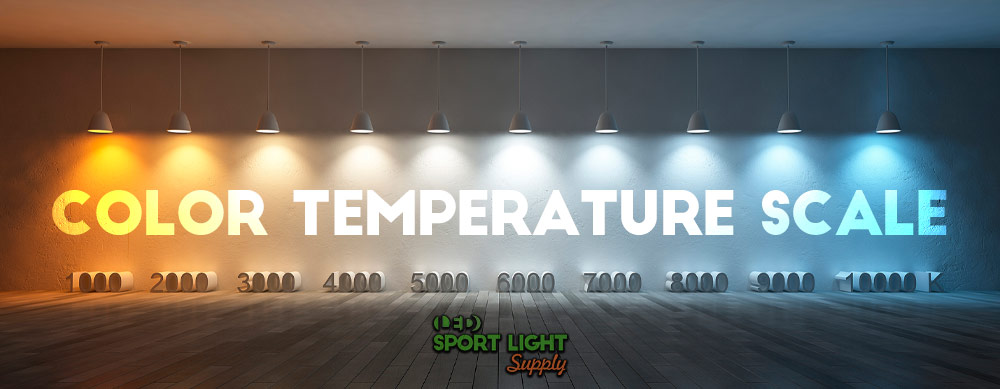
Dissimilar color temperatures will have a different lumen output. So, you need to find out the model of your light if you want to recover the 400W metal halide lumen value.
The color temperature is indicated on the label together with the other parameters. In detail, this value is expressed in Kelvin degrees.
The color temperature determines the hue of the light. In brief, the colder the light, the bluer it will appear. By contrast, warm light will tend to yellow. The lower the Kelvin number, the warmer the light will be.
On balance, MH warm white bulbs have a higher lumen output. Usually, above 35,000 lm. Growers use these lamps during the flowering phase. Or to promote germination. Instead, 400W MH cold white bulbs average 20,000 lm. Growers use them for the vegetative phase of succulents, fruit, vegetables, and cannabis.
3. Using time
Over time, the metal halide lumen output decreases. A 400W HID burns out because of the internal gas pressure, which rises during continuous operation. After several hours, the MH lamp needs more and more maintaining voltage. In a sense, it begins to die until the arc demands more voltage than the ballast can provide. At first, the 400 watt bulb cools down and lets you light it up again. This series of events is known as cycling.
On the packaging, you might find a mortality curve. An approximate metal halide lumen maintenance curve might show a good rating during the first quarter of its life span. Then, the curve usually goes down. That is, until the internal gas pressure causes the bulb to blow.
Overlamping might be a problem if you use incompatible ballasts, capacitors, or starters. In that case, overheating can lead to a shorter life cycle. As well as a serious safety risk.

